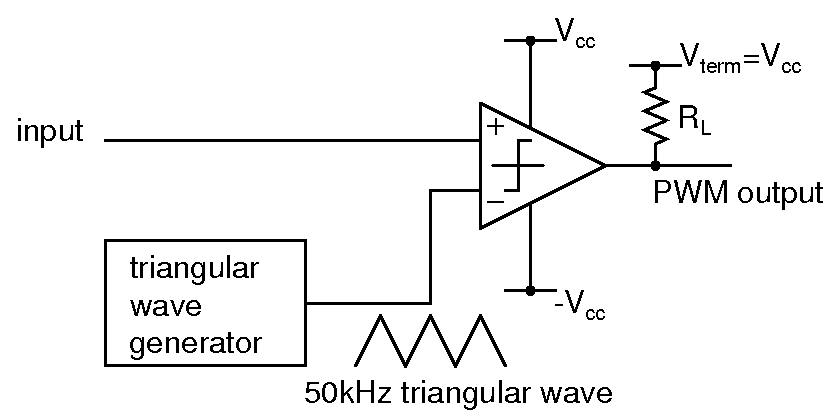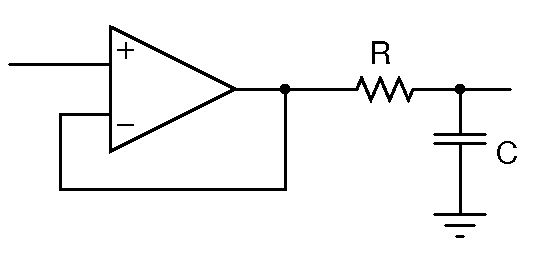Pulse width modulator
- Goals: Understand the basic operation of a pulse width modulator.
- Principle: In conventional amplifiers, the output voltage is proportional to the input voltage. In a pulse width modulator, the output duty cycle is proportional to the input voltage. A switch operated from the pulse width modulator has its average output proportional to the input. Since a switch has no power loss in theory(I=0 for an open switch and V=0 for a shorted switch, resulting in VI=0 under all conditions), and very little loss in practice, amplifiers using this principle can be very efficient.
- The circuit above shows a pulse width modulator. The input is compared with a triangular waveform. Use the (fixed frequency) oscillator you made earlier in this experiment to generate the triangular wave. Use an LM311 comparator with dual supplies. LM311 has an open collector output. Be sure to connect a load resistor to bias the output transistor in the IC. Verify the operation by monitoring the output waveform and varying the dc input.
- Apply a sinusoid at a couple of hundred Hz to the input and observe the output. How will you recover the sinusoidal shape from the comparator output?
- Build the filter above with the RC corner set to 500Hz and drive it with the output of the comparator. Apply a sinusoid to the input of the pulse width modulator, vary its input amplitude and observe the output. What relationship do you see? What is the limit on the input amplitude for this relationship to hold? How can you increase the limit?
- What are the ways in which you can increase the gain (ratio of the amplitude of the output sinusoid after filtering to the input amplitude) of the circuit? You can change any component or parameter in the pulse width modulator.
- Applications: Because of their high efficiency, pulse width modulated switches followed by passive LC filters are used in inverters(UPS)[generate sinusoidal waveforms], switched mode power supplies(e.g. inside your desktop, or your laptop power adapters)[generate a dc], audio amplifiers in computer speakers, TVs[generate an amplified copy of the input signal] etc. Increased power efficiency, in addition to saving power, also results in a smaller size due to reduced heatsinking requirements as less heat needs to be carried out of the circuit.

